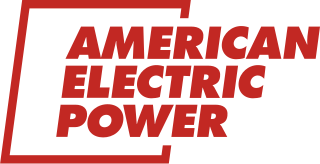Related Research Articles

GTE Corporation, formerly General Telephone & Electronics Corporation (1955–1982), was the largest independent telephone company in the United States during the days of the Bell System. The company operated from 1926, with roots tracing further back than that, until 2000, when it was acquired by Bell Atlantic; the combined company took the name Verizon.

Emera Incorporated is a publicly traded Canadian multinational energy holding company based in Halifax, Nova Scotia. Created in 1998 during the privatization of Nova Scotia Power, a provincial Crown corporation, Emera now invests in regulated electricity generation as well as transmission and distribution across North America and the Caribbean.
Progress Energy was a power generation and distribution company. Prior to its merger with Duke Energy, it was a Fortune 500 energy company with more than 21,000 megawatts of generation capacity and $9 billion in annual revenues. Headquartered in Raleigh, North Carolina, Progress Energy includes two major electric utilities that serve approximately 3.1 million customers in the Carolinas and Florida. As an independent company, the last chairman and CEO of Progress Energy was William D. Johnson; his predecessor was Robert McGehee, who died on October 9, 2007, at the age of 64 of a stroke while on a business trip to London.

American Electric Power Company, Inc. (AEP), is an American domestic electric utility company in the United States. It is one of the largest electric utility companies in the country, with more than five million customers in 11 states.

Duke Energy Corporation is an American electric power and natural gas holding company headquartered in Charlotte, North Carolina.

FirstEnergy Corp. is an electric utility headquartered in Akron, Ohio. It was established when Ohio Edison merged with Centerior Energy in 1997. Its subsidiaries and affiliates are involved in the distribution, transmission, and generation of electricity, as well as energy management and other energy-related services. Its ten electric utility operating companies comprise one of the United States' largest investor-owned utilities, based on serving 6 million customers within a 65,000-square-mile (170,000 km2) area of Ohio, Pennsylvania, West Virginia, Virginia, Maryland, New Jersey, and New York. Its generation subsidiaries control more than 16,000 megawatts of capacity, and its distribution lines span over 194,000 miles. In 2018, FirstEnergy ranked 219 on the Fortune 500 list of the largest public corporations in the United States by revenue.

Aquila, Inc. was an electricity and natural gas distribution network headquartered in Kansas City, Missouri in the United States. The company also owned and operated power generation assets. It previously operated under the name UtiliCorp United, Inc. The company at one time ranked #33 on the Fortune 500 list.

First Union Corporation was a bank holding company that provided commercial and retail banking services in eleven states in the eastern U.S. First Union also provided various other financial services, including mortgage banking, credit card, investment banking, investment advisory, home equity lending, asset-based lending, leasing, insurance, international and securities brokerage services and private equity through First Union Capital Partners, and through other subsidiaries.

Ameren Corporation is an American power company created December 31, 1997, by the merger of St. Louis, Missouri's Union Electric Company and the neighboring Central Illinois Public Service Company of Springfield, Illinois. It is now a holding company for several power companies and energy companies. The company is based in St. Louis, with 2.4 million electric, and 900,000 natural gas customers across 64,000 square miles in central and eastern Missouri and the southern four-fifths of Illinois by area.
WEC Energy Group is an American company based in Milwaukee, Wisconsin that provides electricity and natural gas to 4.4 million customers across four states.

The Crystal River Energy Complex consists of seven power-generating plants on a 4,700-acre (1,900 ha) site near the mouth of the Crystal River in Citrus County, Florida. Crystal River 1, 2, 4, and 5 are fossil fuel power plants. Crystal River 3 was previously the sole nuclear power plant on the site (1977-2013). The Crystal River Combined Cycle site consists of two Mitsubishi gas turbines, which came on-line in 2018. The complex was developed in the early 1960s by the Florida Power Corporation and sold to Progress Energy Inc in 2000. Following Progress Energy's merger with Duke Energy in 2012, the facility is owned and operated by Duke Energy.
Duke Energy Florida, formerly Florida Power, was the generation, transmission, and distribution sector of Florida Progress Corporation. The company distributed power over much of central and north Florida. Their service area covers approximately 13,000 square miles. Along with that, the company supplies electric service to approximately 1.8 million residential, commercial and industrial customers in the state. Florida Progress merged with Carolina Power & Light in 2000 to form Progress Energy. Progress Energy merged with Duke Energy in 2012. Today the Florida operations operate as Duke Energy Florida.
Evergy, Inc. is an American investor-owned utility (IOU) with publicly traded stock with headquarters in Topeka, Kansas, and in Kansas City, Missouri. The company was formed from a merger of Westar Energy of Topeka and Great Plains Energy of Kansas City, parent company of Kansas City Power & Light. Evergy is the largest electric company in Kansas, serving more than 1.7 million residential, commercial and industrial customers in Kansas and Missouri. Its more than 40 power plants have generating capacity of 16,000 megawatt electricity in Kansas and Missouri. Service territory covers 28,130 square miles (72,900 km2) in east Kansas and west Missouri. It owns more than 10,100 miles (16,300 km) of transmission lines and about 52,000 miles (84,000 km) of distribution lines.
Progress Rail Services Corporation, a fully owned subsidiary of Caterpillar since 2006, is a supplier of railroad and transit system products and services headquartered in Albertville, Alabama. Founded as a recycling company in 1982, Progress Rail has increased the number of its product and service offerings over time to become one of the largest integrated and diversified suppliers of railroad and transit system products and services in North America. Progress Rail markets products and services worldwide and maintains 110 facilities in the United States, 34 in Mexico, 4 in Canada, 2 in Brazil, 5 in the UK, 1 in Italy, and 1 in Germany. Progress Rail is organized into two divisions: Infrastructure and Rolling Stock.

Peter Terrell Loftin was an American telecom entrepreneur who founded Business Telecom, Inc. (BTI) when he was only 25 years old and built it up to a multimillion-dollar company that was eventually merged with Deltacom.

Red Hat Tower is the headquarters of Red Hat. It is located at Raleigh, North Carolina, United States. It was completed in 2004 at a cost of $100 million as a headquarters for Progress Energy Inc and has 19 floors and 366,000 square feet (34,000 m2) of space. It is owned by J.P. Morgan Trust Co.

One Progress Plaza is a high-rise building in Raleigh, North Carolina. It was completed in 1977 as a headquarters for Carolina Power & Light and has 21 floors and 440,000 square feet (41,000 m2) of space. It is owned by Hawthorn Associates.
Lynn J. Good is chair, president and chief executive officer of Duke Energy, a Fortune 500 company. Good is an Ohio native and graduated from Miami University where she earned a BS in Systems Analysis and in Accounting (1981).

The Electric Bond and Share Company (Ebasco) was a United States electric utility holding company organized by General Electric. It was forced to divest its holding companies and reorganize due to the passage of the Public Utility Holding Company Act of 1935. Following the passage of the Act, the U.S. Securities and Exchange Commission (SEC) selected the largest of the U.S. holding companies, Ebasco to be the test case of the law before the U.S. Supreme Court. The court case known as Securities and Exchange Commission v. Electric Bond and Share company was settled in favor of the SEC on March 28, 1938. It took twenty-five years of legal action by the SEC to break up Ebasco and the other major U.S. electric holding companies until they conformed with the 1935 act. It was allowed to retain control of its foreign electric power holding company known as the American & Foreign Power Company (A&FP). After its reorganization, it became an investment company, but soon turned into a major designer and engineer of both fossil fuel and nuclear power electric generation facilities. Its involvement in the 1983 financial collapse of the Washington Public Power Supply System's five nuclear reactors led to Ebasco's demise because of the suspension of nuclear power orders and lawsuits that included numerous asbestos claims. The U.S. nuclear industry stopped all construction of new facilities following the 1979 nuclear meltdown at Three Mile Island, going into decline because of radiation safety concerns and major construction cost overruns.
The H.F. Lee Energy Complex, formerly the Goldsboro Plant, is an electrical power generating complex operated by Duke Energy. The power complex was originally owned by the Carolina Power & Light Company, which inaugurated a coal-fired power plant in 1951. Two more coal plants were added in 1952 and 1962, and then oil-fueled turbines were added in 1967–71. In 2012 these units were shut down and replaced by four gas-fired units. The Quaker Neck Lake was built as a cooling pond for the coal-fired power stations, and is still used to supply cooling water. It was originally impounded by a low dam on the Neuse River, but in 1998 the dam was removed, while the lake remained contained in an earthen wall. This change allowed fish to migrate further upstream for spawning. Ash ponds near the lake hold toxic coal ash. There are plans to remove and recycle or bury the ash.
References
- ↑ Murawski, John (2011-01-10). "Merger means uncertainty for Raleigh utility's workers". News & Observer . Archived from the original on 2011-01-11. Retrieved 2011-01-10.